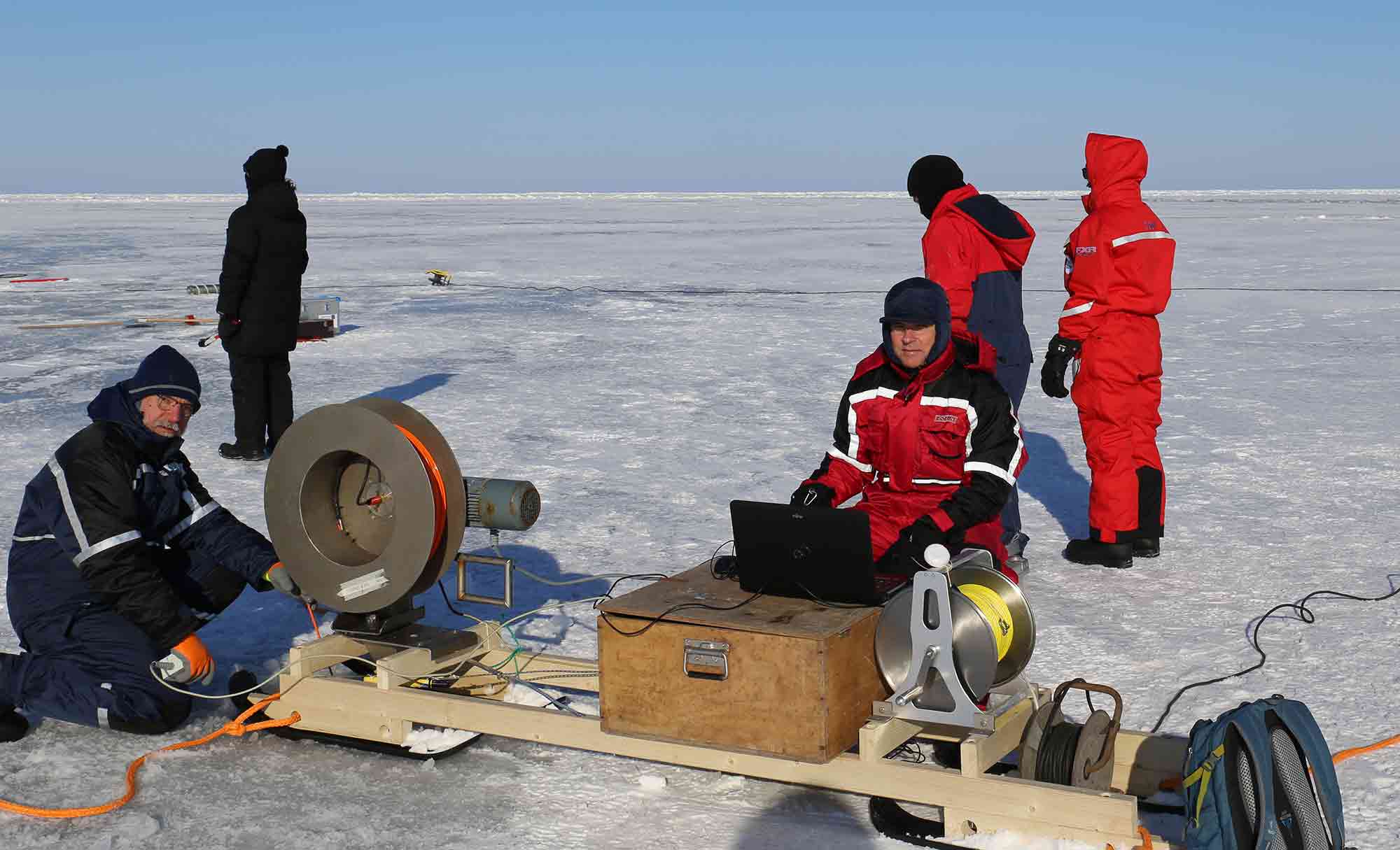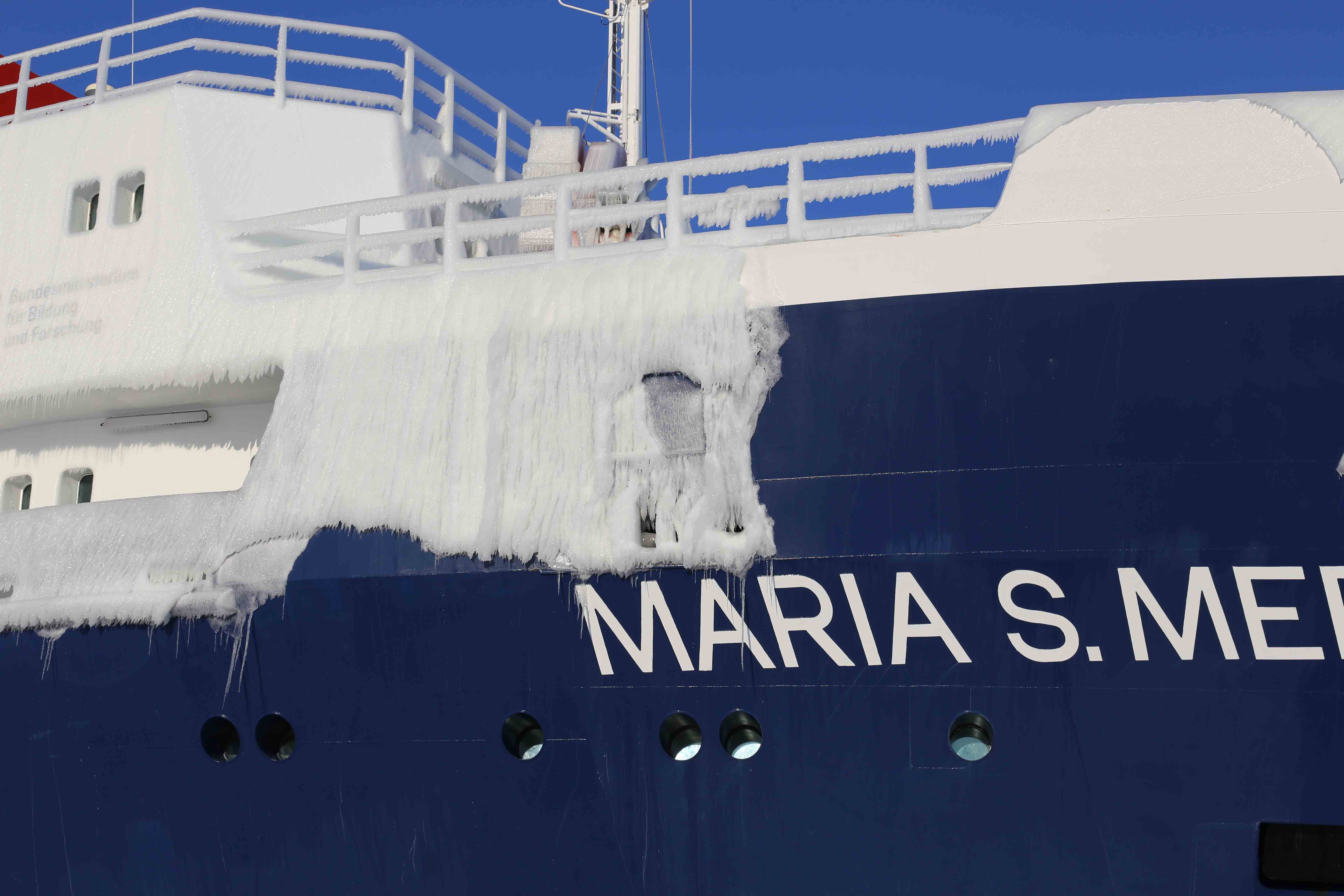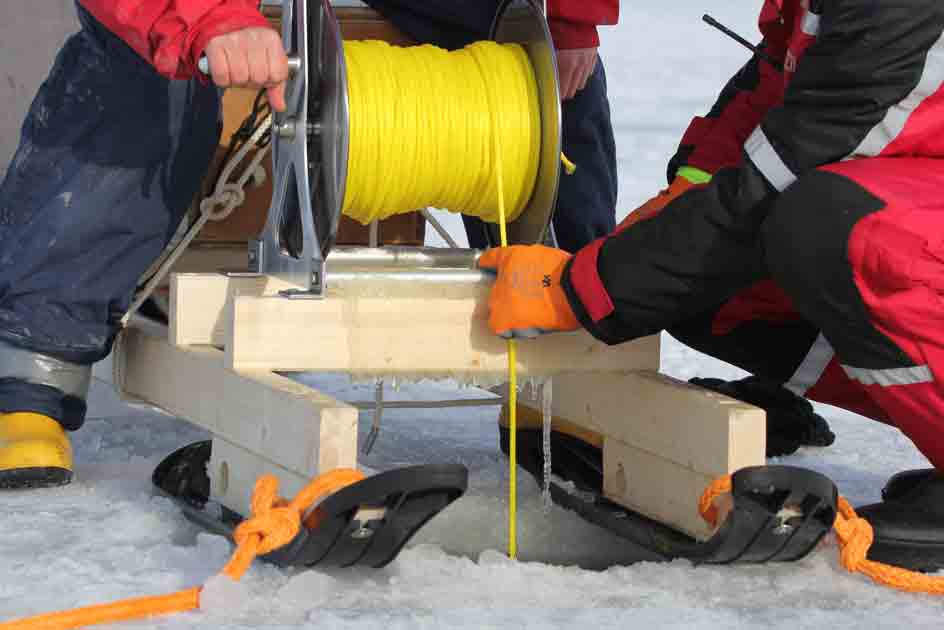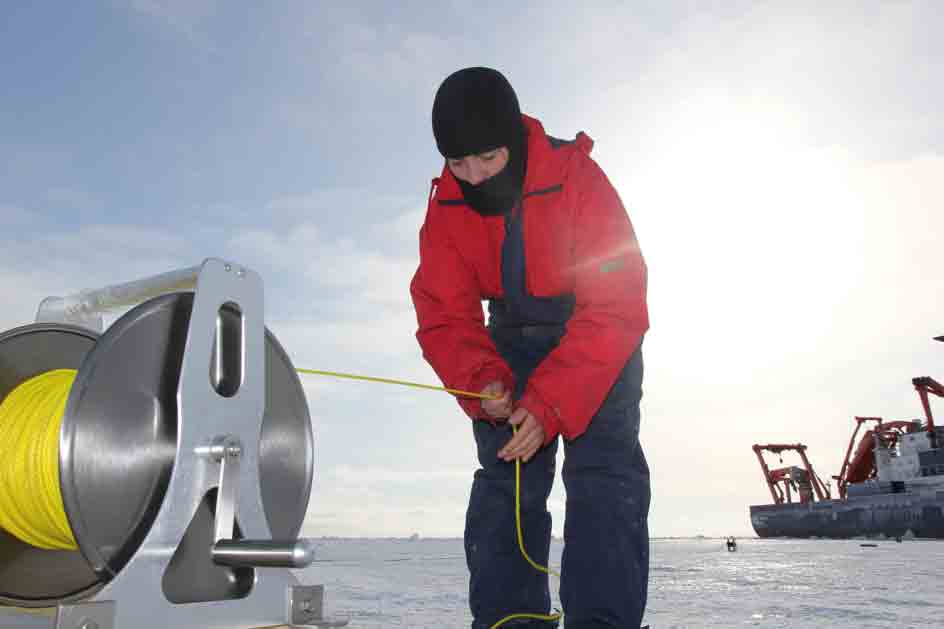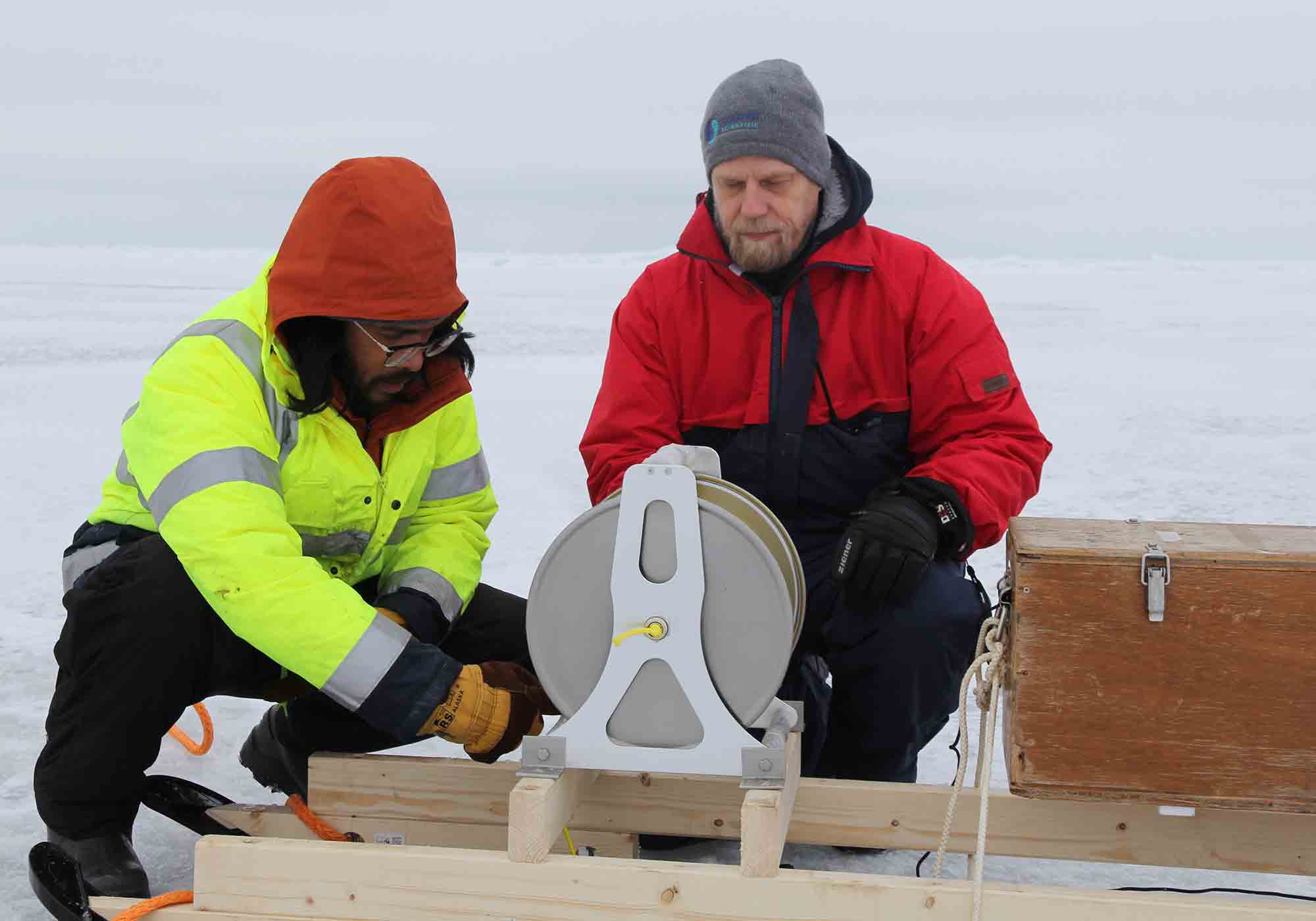Vom Eisloch-Bohren und kälteempfindlichen Kabeln
About drilling ice holes and cold-sensitive cables
Nach weiteren rund 150 Seemeilen mit zwei Sturmtagen sind wir endlich auf dem Eis. Hier startet der zweite Schwerpunkt der Fahrt und es gibt viel Spannendes zu etlichen Forschungsthemen, zu Seekrankheit, dem ohrenbetäubenden Lärm des brechenden Eises und den faszinierenden Eislandschaften zu berichten. Weil wir aber gerade bei der MSS waren, mache ich vorerst mal damit weiter.
After approximately 150 nautical miles more with two storm days we are finally on the ice. Here the second focus of the cruise starts and there are many exciting things to report about several research topics, seasickness, the deafening noise of breaking ice and the fascinating ice landscapes. But because we just were talking about the MSS, I’ll continue with that for now.
Das Eisloch zu bohren, durch das die MSS in die Tiefe gelassen wird, gehört zu den ersten Aufgaben, wenn wir morgens eine stabile Eisstation gefunden haben. Und dann heißt es für das MSS-Team: Sonde fallen lassen, kurbeln, fallen lassen, kurbeln, insgesamt 8 Stunden lang, aufgeteilt in 4 Schichten. Etwas abseits des MSS-Eisloches ist ein Strömungsmesser in einem weiteren Eisloch versenkt worden. Er misst die Wasserbewegung in den oberen 10 m unter dem Eis, die alleine durch die Drift des Eises verursacht werden. Diese Signale müssen später bei der Auswertung der MSS-Profile berücksichtigt werden.
Drilling the ice hole through which the MSS will be lowered into the depths is one of the first tasks once we have found a stable ice station in the morning. And then it’s drop, heave, drop, heave for the MSS team, for a total of 8 hours, divided into 4 shifts. In a small distance from the MSS ice hole, a current meter has been sunk into another ice hole. It measures the water movement in the upper 10 m below the ice, caused by the drift of the ice alone. These signals must be taken into account later when evaluating the MSS profiles.
Nach einer 2 Stunden-Schicht bei gefühlten -10° ist es gut, wenn eine engagierte Ablösung bereit steht und nach 8 Stunden wird es dann auch für das Material kritisch. Das Datenkabel, über das die Übertragung von der Sonde funktioniert, aber auch die Winde, mit der die Sonde jeweils hochgezogen wird, zeigen erste Ausfallerscheinungen. Es wird Zeit für heute Schluss zu machen.
After a 2 hour shift at what feels like -10° it is good to have a dedicated replacement ready to take over. And after 8 hours it becomes critical for the equipment as well. The data cable, over which the transmission from the probe works, but also the winch, with which the probe is pulled up, show first failure symptoms. It is time to call it a day.
